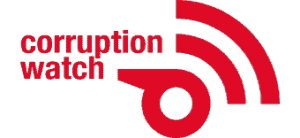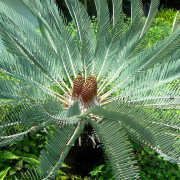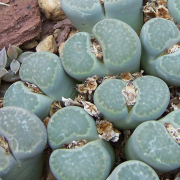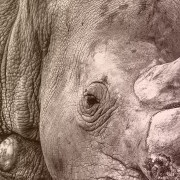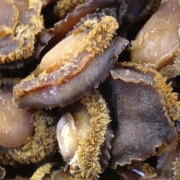|
Getting your Trinity Audio player ready...
|
Corruption Watch is deeply interested in and concerned about the ongoing illicit wildlife trade (IWT), which affects our country drastically and is driven in large part by corruption in various sectors of our society. Over the years we have reported on developments and challenges with various trafficked species, always emphasising that corruption enables these heinous crimes.
Now it is time for some good news regarding elephants and pangolins. But first, a little context.
Law enforcement agencies continue to fight a fierce battle against pangolin scale and ivory trafficking out of Africa. Despite legal protection for the animals, including a total ban in pangolin trafficking through the UN’s Convention on International Trade in Endangered Species (CITES) and a CITES restriction on the trade of any new ivory products, as well as specific domestic laws within various countries, pangolins and elephants remain hunted to the point of endangerment.
The primary markets lie in the East, mainly in China, Vietnam, and Japan. Yemen has been another traditional market for ivory.
For years there seemed to be no stopping the trend, and the threat – until the onset of Covid-19. This proved to be a pivotal point in terms of the volume of illegal trade in these two animals, and to date it has not recovered, according to a new report released in April 2025 by the Wildlife Justice Commission (WJC).
Disruption and Disarray: An analysis of pangolin scale and ivory trafficking 2015–2024, says WJC, presents an updated analysis of ivory and pangolin scale trafficking trends over the past decade, which is broken up for purposes of comparison into 2015-2019 (broadly referred to as the pre-pandemic period) and 2020-2024 (broadly referred to as the post-pandemic period).
The report also explores potential contributing factors to this disruption, including law enforcement efforts in China and Nigeria particularly, changing market dynamics, and shifts in criminal network structures and transportation methods. It concludes with recommendations for tackling transnational wildlife crime, emphasising intelligence-led strategies and international co-operation.
Organised crime networks involved
In 2013 global ivory seizures hit their highest peaked at more than 60 metric tons while in 2019, global seizures of pangolin scales peaked at the shocking figure of more than 100 000 metric tons. In 2016 the volume of pangolin scales seized surpassed that of ivory, although the number of ivory seizures was almost double that of pangolin scales.
But in 2020 when the world shut down, the report reveals, pangolin scale and ivory seizures plummeted because of factors such as travel restrictions and border closures. The encouraging news is that they have remained comparatively low in the years since. By 2024, the volume of pangolin scales and ivory seized were just 84% and 74%, respectively, of their 2019 levels.
“The disruption was sudden and remarkably, it appears to be holding,” says WJC. The organisation adds that other contributing factors to the substantial reduction in the illegal trade of both products, compared to pre-2020 years, include important law enforcement efforts, fluctuations in price dynamics, and changing market demands.
For the report, WJC analysed data from 2 201 seizures of pangolin scales and elephant ivory tusks or pieces from across the globe, mainly multi-ton (one metric ton or more) and large-scale (less than one metric ton but greater than 500kg for overland consignments and 300kg for air) seizures. These amount to more than 370 tons of pangolin scales and over 193 tons of ivory. Estimates of the number of individuals killed range between 100 000 and 1-million for pangolins, and around 19 300 elephants.
The reason for this particular focus was to get a picture, for intelligence purposes, of the major organised crime networks operating in Africa and Asia. “Smaller seizures below these levels are deemed to represent lower-level supply chain movements or seizures prior to consolidation and are of less relevance to understanding the dynamics of organised crime networks.”
A small number of significant seizures comprised the bulk of the scales and tusks seized, says WJC – 14% of the total number of pangolin scale seizures made up a massive 88% of the total weight seized, while 7% of the total ivory seizures accounted for 75% of the total weight.
These figures, says the report, are a strong indicator of the presence and involvement of organised crime networks in the supply chains, owing to the extensive resources needed to procure and move large-scale shipments of these products.
The reduction in trade, therefore, could be attributed to organised crime networks getting better at evading detection, the report adds – but fewer large consignments could also indicate a lower risk appetite for criminal networks to bear the financial losses caused in the event of law enforcement interception. There are several signs that law enforcement is finally coming to the party.
A further encouraging development is that more multi-ton seizures are occurring in Africa prior to export. This could “point to a greater proactive law enforcement response in African hotspots”.
In addition, the report notes, no significant pangolin scale seizures have been reported at any seaport globally for three years, or airport for more than five years.
This is no cause for complacency, cautions WJC. “The flexibility of networks to adapt to changes in the market and deal interchangeably with pangolin scales and ivory highlights the importance of targeting the criminal networks, rather than the product, to address this problem.”
Corruption is an IWT enabler
None of this and other types of IWT would be happening without the presence of corruption.
“Like with other forms of corruption, wildlife-related corruption involves the abuse of power for private gain, and this abuse results in the undermining of laws and systems – in this case, laws and systems that have been put in place to protect wildlife and regulate wildlife trade,” says TRAFFIC in its 2015 report titled Strategies for Fighting Corruption in Wildlife Conservation.
In fact, says the organisation, corruption is one of the biggest facilitators of illegal wildlife trade. “Corrupt activities can take place at every stage in the illegal trade in restricted animals, animal parts, plants and timber, from poaching, illegal logging and illegal fishing through transportation of illegally poached or harvested goods, processing and export, to the sale of illegal wildlife products and laundering of proceeds.”
In South Africa we have seen the involvement of SANParks rangers and other officials – including police officers – in poaching activities. Corruption is named time and time again as an enabler, and the involvement of syndicates is well known.
“Corruption also undermines attempts to apprehend and prosecute those involved in wildlife crime, for example through the bribing or coercion of law enforcement officers, prosecutors, or judges in order to avoid investigation or to influence court decisions,” adds TRAFFIC.
“Illegal wildlife trafficking has been widely recognised as a serious threat to national and international security.”
Recommendations
WJC recommends various counter-measures, including:
- Using an array of intelligence analysis and special investigative techniques to assemble the details of large, complex cases and build an irrefutable brief of evidence for prosecution.
- Conducting further investigation after seizures to identify those responsible for organising shipments and supplying the product.
- Involving prosecutors early in the investigation is essential to ensure evidence is collected lawfully and is admissible in court. The
- International cooperation such as intelligence sharing and joint investigations is vital to tackle these crimes holistically across the supply chain, due to the transnational nature of wildlife crime and crime displacement.
- Public-private partnerships between law enforcement agencies and the private sector (including civil society organisations, financial institutions, the transport sector, and academia) can provide valuable technical assistance and capacity building support to assist with investigating transnational wildlife crime networks.
“The scale of this trade, the importance of corruption in facilitating it, and the seriousness of its consequences should make addressing wildlife-related corruption a high priority for governments and law enforcement agencies,” states TRAFFIC.
